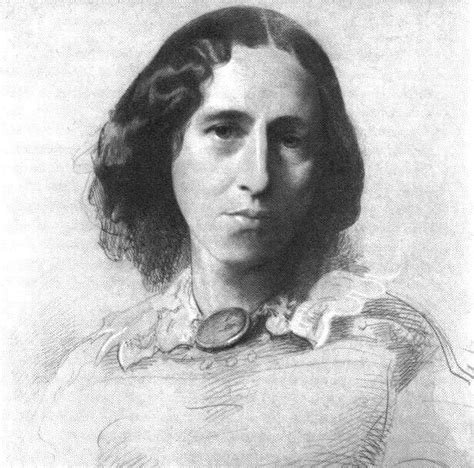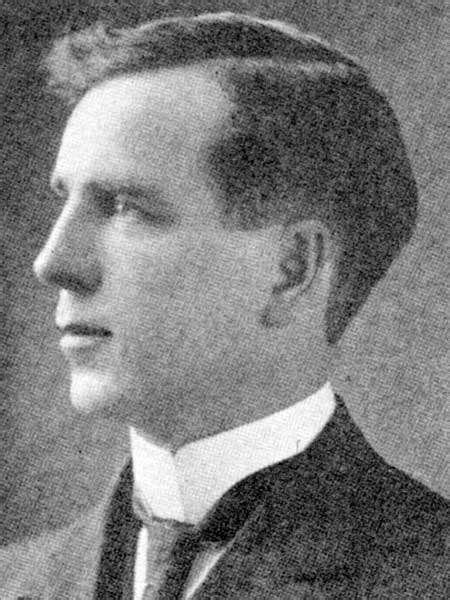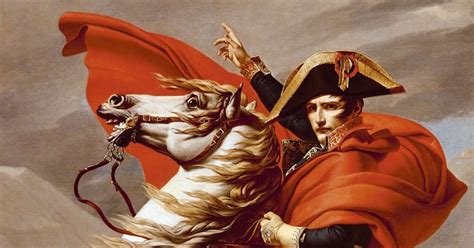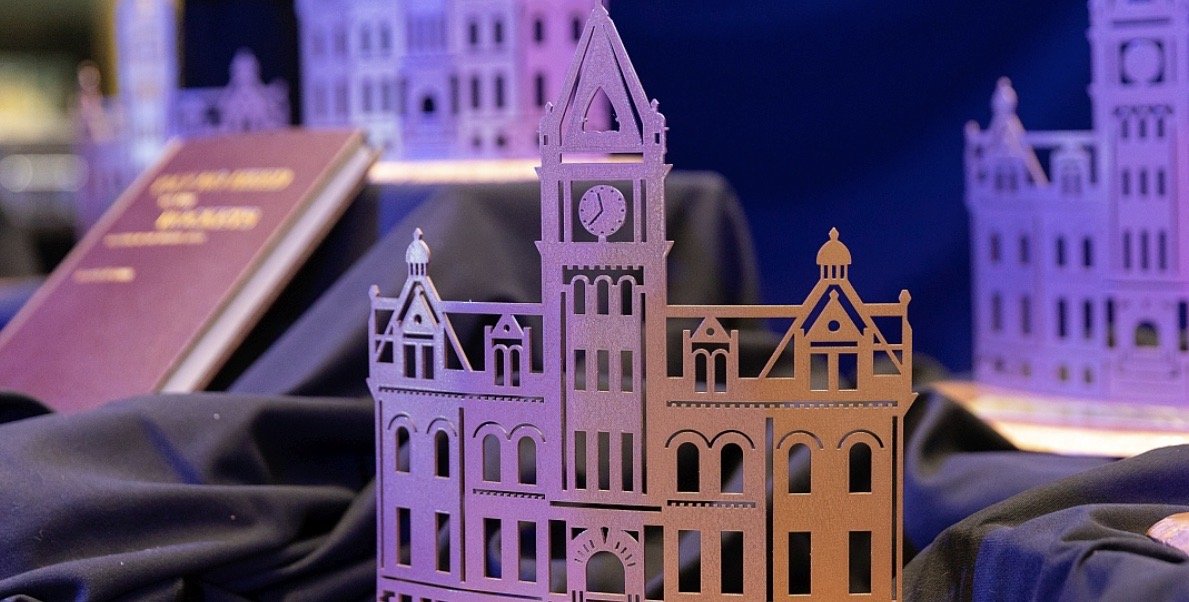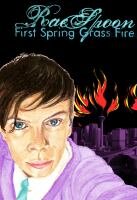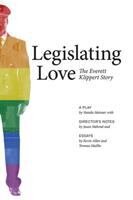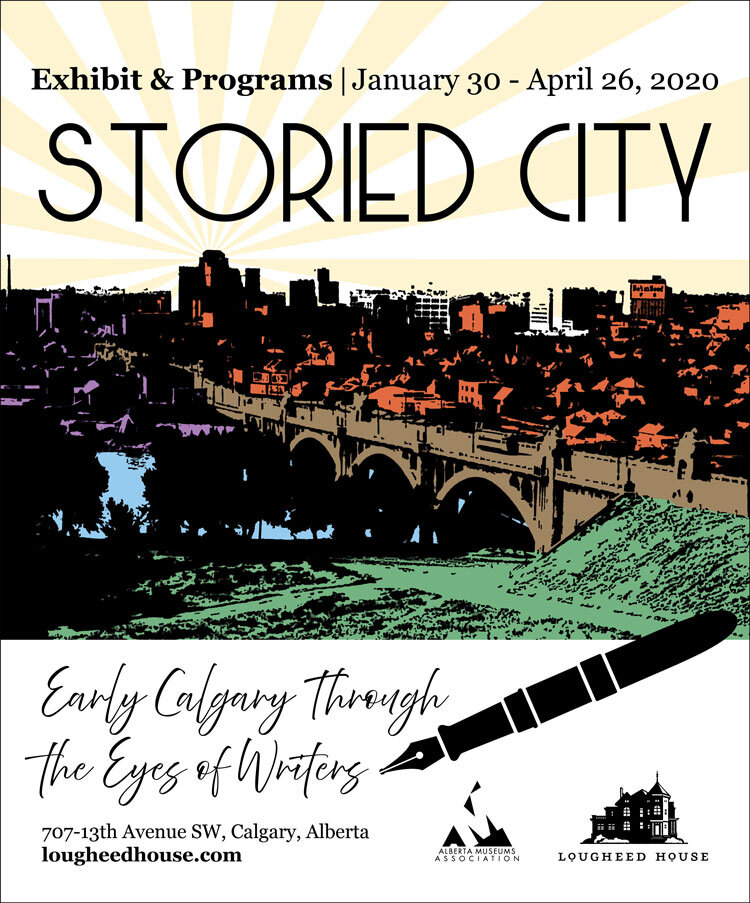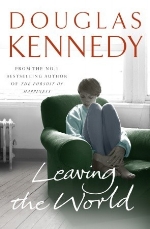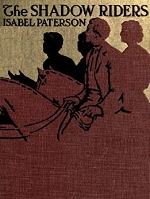A full-page spread explores the question in the Calgary Daily Herald, October 4, 1913 (screenshot from Newspapers.com)
So asked the Calgary Daily Herald one hundred years ago, in the autumn of 1913.
“There is no more interesting index of the mind of a people than the class of the books they read. It may not be an all-round gauge, but it gives a very significant glimpse into their character.”
The Herald’s intrepid anonymous reporter was breathless with questions.
“There is no more interesting index of the mind of a people than the class of the books they read. It may not be an all-round gauge, but it gives a very significant glimpse into their character.”
“Do Calgarians read fiction, or poetry, or history, or all three, and in what proportion? Are they interested in the old English classics, or do they stick pretty closely to modern writers? Of the latter, do they prefer those whom the literary critics tell us are to be ranked highest, or do they with an obstinate disregard for literary critics choose those who are the lesser artists, but whom they find more interesting? Do they read for pleasure or profit? Is their reading confined to those books that merely amuse and divert, or have they an interest in the “literature of knowledge” as well? Do they prefer American and Canadian writers to British and foreign? Do they, as a matter of fact, read much of anything?”
The reporter headed to the city’s brand-new public library for answers.
Circulation desk at what we now know as the Memorial Park Library (Photo: University of Calgary Libraries)
The handsome sandstone building anchoring what we now call Memorial Park was just over a year old. Our reporter may have detected the lingering aroma of fresh paint.
In the autumn of 1913, Calgarians could find in the library stacks “over 12,000 books, ancient and modern, and as representative a list as could be found anywhere on the continent.”
Of Calgary’s 50,000 residents, six thousand (or 12%) were library members, each one borrowing an average of 24 books a year, with a circulation nearing 120,000 books per annum. A healthy sample for an enquiry into the reading preferences of adult Calgarians.
(A century later, around 60% of Calgarians have a library card. In 2022, we borrowed 16,300,000 physical and digital items.)
Calgary’s Chief Librarian Alexander Calhoun: “a veritable walking catalogue” (Calgary Herald, Oct 4, 1913)
Back in 1913, the Herald posed its questions to the city’s chief librarian. Alexander Calhoun “is a regular mine of information. He is, in fact, a veritable walking catalogue and more than that, he has all the information well arranged and tabulated in his mind and knows exactly what books patrons of the library prefer.”
First things first: “Are Calgary people… very great readers?”
Mr. Calhoun responded with data. “The circulation of books per capita in a year is two.” In older North American cities with established library systems, this number would be considered high. “It is plain, therefore, that Calgary is distinctly a city of readers.”
But what kind of books in particular do Calgarians like to read? Mr. Calhoun took the reporter on a tour of the library shelves.
Works by William Shakespeare “are borrowed widely and frequently”
The Herald’s most “illuminating discovery”? Calgarians read Shakespeare. The Bard’s works “are borrowed widely and frequently.” For the reporter, “this is something in the nature of a reassurance.”
The most popular genre for Calgary library patrons? Fiction, hands down.
Alexandre Dumas “stands highest… in the hearts” of Calgary readers. “A whole shelf is devoted to his bulky volumes – The Three Musketeers, The Black Tulip, The Count of Monte Cristo, Marguerite de Valois.”
In 1913, George Eliot’s Mill on the Floss and Silas Marner were three times as popular as Walter Scott’s Ivanhoe.
Calgarians also favour Charles Dickens, William Thackery and Sir Walter Scott. George Eliot and Robert Louis Stevenson are popular, too.
When it comes to “modern” British writers: Calgarians love the novels of W. J. Locke, Stanley Weyman, Sir James Barrie, Rudyard Kipling, and Sir Arthur Conan Doyle.
As for “foreign” novelists, Calgarians prefer Leo Tolstoy and Jules Verne. Bestselling French novelist Anatole France is “not read at all, except by a limited few.”
Favourite American novelists? Winston Churchill (no relation to the British statesman), Jack London and Rex Beach. Topping those is Owen Wister, the writer inspired by the legendary Bar U cowboy, Everett C. Johnson.
“It is not altogether surprising that the most popular single book in the library is Owen Wister’s The Virginian”
“It is not altogether surprising that the most popular single book in the library is Owen Wister’s The Virginian… That it is popular here in the west, where no writer can palm off a tale of the plains that rings false – is perhaps the highest tribute that could be paid.”
(Rumour has it that Wister came to town in 1912 to take in the Calgary Stampede and visit the inspiration for his novel, former Bar U cowboy Everett Johnson then living in the city.)
Do Calgarians read Canadian writers? In 1913, Ralph Connor (aka the Reverend Charles Gordon who once served the Presbyterians of Canmore) is the most popular choice. Sir Gilbert Parker’s historic novels set in French Canada runs a close second while L. M. Montgomery is a favourite “among the young ladies of Calgary.” Stephen Leacock “is read considerably,” as are Marion Keith, Charles G. D. Roberts and Robert E. Knowles.
“Poetry… is by no means sneered at by Calgarians”
What about verse? “Poetry… is by no means sneered at by Calgarians. Which may be one of the most cheerful signs that we gather from this little excursion into the Calgarian’s mind.”
Robert J. C. Stead: a Calgary-based journalist and writer dubbed “the prairie poet”
Favourites include Rudyard Kipling, Robert W. Service, Pauline Johnson (“that sweet singer of the Six Nations”), and Calgary’s own Robert J. C. Stead. (By day, the man dubbed “the prairie poet” worked as a journalist at city daily The Morning Albertan.) The American poet John Lomax’s Cowboy Songs and Other Frontier Ballads “also gets the Calgary ear.”
The reporter is curious to learn that Archibald Lampman – “our greatest Canadian poet” – is unread by Calgary readers. “Perhaps he is too much of the east, and sings too persistently of the older provinces, knowing not the prairies and the mountains which we love.”
“We in Calgary apparently like the poet who will sing to us of the virginal strength and vigor of our sweeping plains and towering mountains.”
As for English Romantic and Victorian poets: “those who read them do so in their own volumes” and study them in “literary clubs.” (In 1913, the Calgary Women’s Literary Club was discussing Robert Browning’s works at their meetings on the Library’s second floor.)
Calgary readers love drama. Not only Shakespeare, but Maurice Maeterlinck and George Bernard Shaw. As well, Ibsen “the gloomy Norseman is read with seeming avidity” and Oscar Wilde “the eccentric English genius, enjoys a wide popularity.”
An early Calgary motorist with a penchant for George Bernard Shaw? (Photo: University of Calgary Libraries)
As for “philosophical works”: “Such deep thinkers as Nietzsche, the German who went mad with thinking, and who propounded the theory of the ‘Superman’ that Bernard Shaw has taken up, has seemingly a strange attraction for Calgarians.” As for Shaw’s appeal: “Perhaps Calgary, being a city of motorists, enjoyed his delineation of the modern chauffeur in Man and Superman.
“As to essays, the experience in Calgary, as elsewhere, is that the essay form is not very popular with the general reader nowadays…. People who like literature for itself, and not primarily for a story – and there are not a few in Calgary” favour the essays of E. V. Lucas, G. K. Chesterton and Dr. Henry Vandyke.” Lovers of the essay, though, seem to buy collections by these writers for their own libraries. In 1913, the public library’s copies are not often signed out.
Calgarians’ favourite historical hero back in 1913
Calgary’s favourite “historical hero”? None other than the Little Corporal… Lives of Napoleon are incessantly in demand.” After Bonaparte, Abraham Lincoln and George Washington – “which may indicate only that our American citizens are greater readers of biography than we Canadian born.”
The most popular local biography? Father Lacombe: The Black-Robe Voyageur by the Edmonton-based writer Katherine Hughes.
Books on technical subjects are in great demand – “natural in an industrial city.” “Well thumbed” sociology books are evidence that Calgarians are also interested in social behaviour and relationships. In 1913, books in “psychic research” are also flying off the shelves.
After a vigorous session in the library with Mr. Calhoun, our intrepid reporter came away with a few insights.
“We are by no means a community of ‘base materialists’ with no other interest but the acquisition of real estate and the chase for gold.”
“To sum up all, it may be said that Calgarians are omnivorous readers. Their range of taste is of the widest… There is at least enough to show that Calgarians have a healthy and growing interest in good literature and that we are by no means a community of ‘base materialists’ with no other interest but the acquisition of real estate and the chase for gold. That we, to some extent appreciate our own native writers is one of the most encouraging facts that one derives from this tentative examination.”
Encouraging words about the readers of a young city perched on the future a century ago.
If you’d like to read the literary tea leaves on current Calgary favourites and muse about what our most-borrowed books say about our collective character, check out these lists from the Herald and the Calgary Public Library. In 2022, fiction still rules, local writers are in the mix, and Calgarians are keen to improve themselves.




